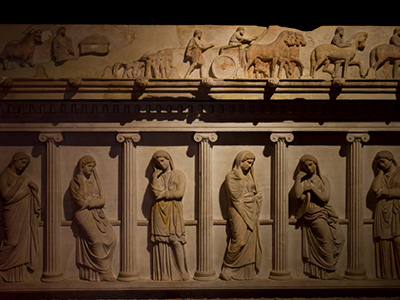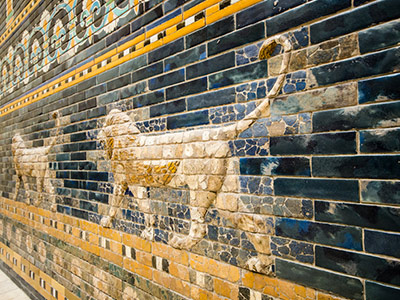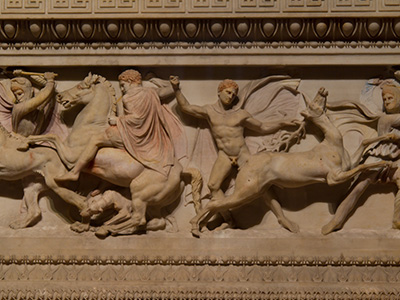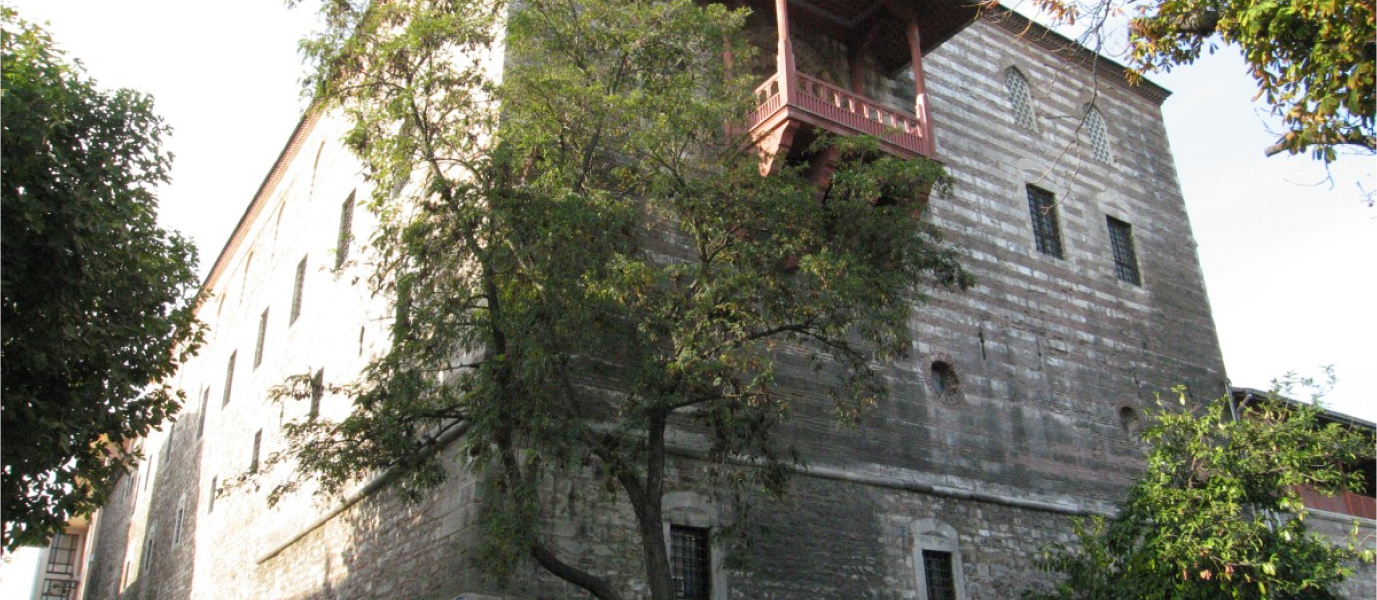In a historic and geographically unique city like Istanbul, it is inevitable that one of its most attractive features would be its archaeological museum. Having been the capital for the Roman Empire, the Byzantine Empire and the Ottoman Empire, it’s no wonder that the ‘Pearl of the Bosphorus’ has such a wealth of antiquity on display. For any lover of history and archaeology, this is a must-see attraction.
Despite having been plundered a number of times over the centuries, the Istanbul Archaeological Museum still holds many treasures within. The museum is located in the heart of the city, in the district of Fatih, and within a few minutes’ walk from Topkapi Palace.
The Istanbul Archaeological Museum: a fascinating history
The origins of this outstanding museums are to be found at the end of the 19th century at the hand of Osman Hamdi Bey. It was this painter and archaeologist who endeavoured to fund a museum of this type in the gardens of Topkapi Palace.

Osman Hamdi Bey also worked as the mayor for one of Istanbul’s districts, but he was most well known for being a pioneering Ottoman artist who was taught by Jean-León Gérôme. In 1881, he was named director of the Imperial Museum, where he set about reforming the museum in a more scientific manner and began organising the first archaeological digs in the country. Worried by the great amount of plundering that was taking place, in 1882 Osman Hamdi Bey established a new regulation and opened the Istanbul Academy of Fine Arts.
Hamdi Bey conducted excavations in Anatolia, the temple of Hecate, the necropolis of Sidon, where he found one of the main features of the museum, the magnificent sarcophagus of Alexander the Great, and at many other sites. It was in the wake of finding the sarcophagus in Sidon that made Hamdi Bey decide that a specific place was needed to house them. Soon after, work began on a new construction in one of the annexes of Topkapi Palace and, in 1891, the Archaeological Museum was inaugurated. Hamdi Bey took charge and was the first director of the museum.
Alexander Vallaury, the main architect, was inspired by the Sarcophagus of the Crying Women, which is also housed in the museum, when designing the stunning portico.
Due to the vast number of display pieces, in 1991, a decision was taken to add a new and bigger building that had 4 floors to exhibit the collection. However, even with the new building, the sheer volume of finds means that when you approach the museum and its grounds you will find a number of them outside.
Collections that you should see in the Istanbul Archaeological Museum
When visiting a museum of such quality, it is important to organise your time well and know which of the pieces you must see while there.

The Istanbul Archaeological Museum is home to some of the most famous artefacts from Antiquity and to have the opportunity to see them up close is wonderful. The collection is distributed between 20 rooms which are in the main building and the 4 floors of the new construction. The rooms are divided into different galleries that exhibit different elements of the collection:
- Classical Archaeology
These rooms are located in the main building. The highlights of this section are without a doubt the four sarcophaguses that Osman Hamdi Bey discovered in Sidon, present day Lebanon. The Alexander Sarcophagus is the most famous of the four. Dated back to the 4th century B.C., the sarcophagus is decorated with depictions of Alexander battling the Persians at the Battle of Issus. Made from Pentelic marble, there are still traces of the multi-coloured designs on this magnificent piece which imitates the stylings of a Greek temple. The Sarcophagus of the Crying Women is also an object that deserves some attention, with its delicately sculpted figures that encapsulate the image of grief. In addition to these sarcophaguses, the collection includes Archaic and Hellenistic period sculptures and many other examples of sarcophaguses like that of Sidamara.
- Oriental Art Collection

In these rooms you’ll find an outstanding collection of objects and artefacts from Anatolia, Egypt, Mesopotamia and the Near East. Among the most valued pieces, you must make sure you see the Door of Istar. Decorated with the original reliefs of lions, dragons and bulls, it is incredible to think that this was one of the main doors from the inner wall of Babylon. Another stunning piece is the Tablet of the Treaty of Qadesh. This invaluable document was a peace treaty that was put in place between the Egyptian pharaoh, Ramses II and the Hittite King, Hattusili III and it is one of the prized pieces of the collection.
- Pottery and Jewellery Collection
The collection is housed in the Tiled Pavilion, which was a building constructed under the order of Mehmet II in 1472 as a place for recreation for the palace’s residents. It is one of the oldest sections of the archaeological museum complex. It is worth visiting this area even if it is only to see the blue, Iznik tiles that decorate the portico.
- The Museum Gardens
The gardens are filled with sarcophaguses and other archaeological finds and it’s a lovely place to come and relax. There is even a café where you can get some refreshments and a snack, all the while surrounded by tangible history.




































































